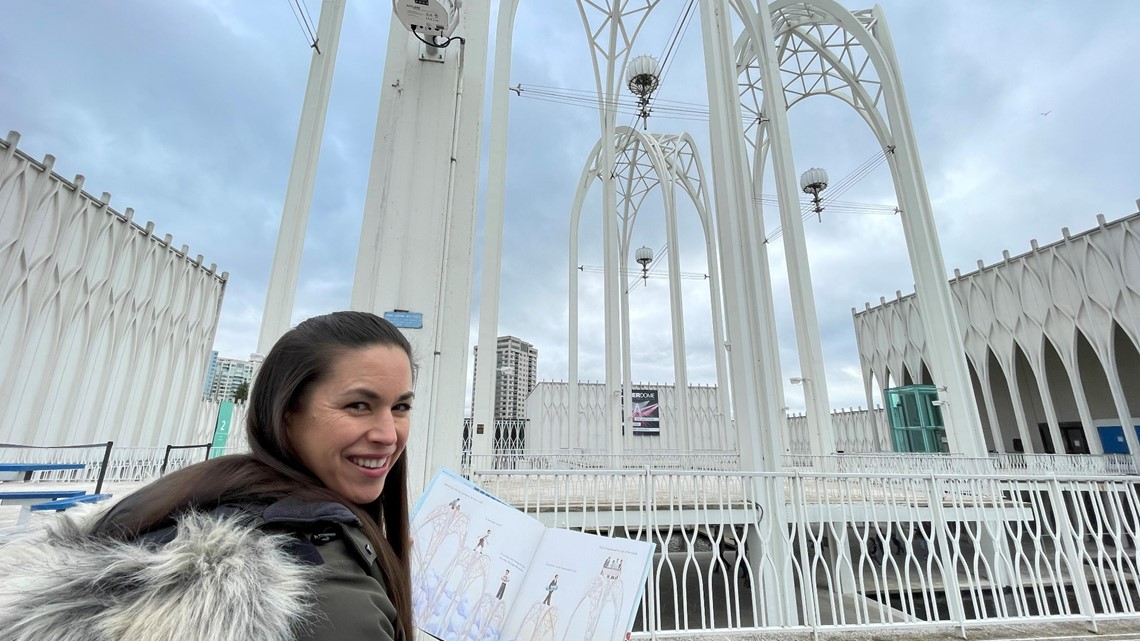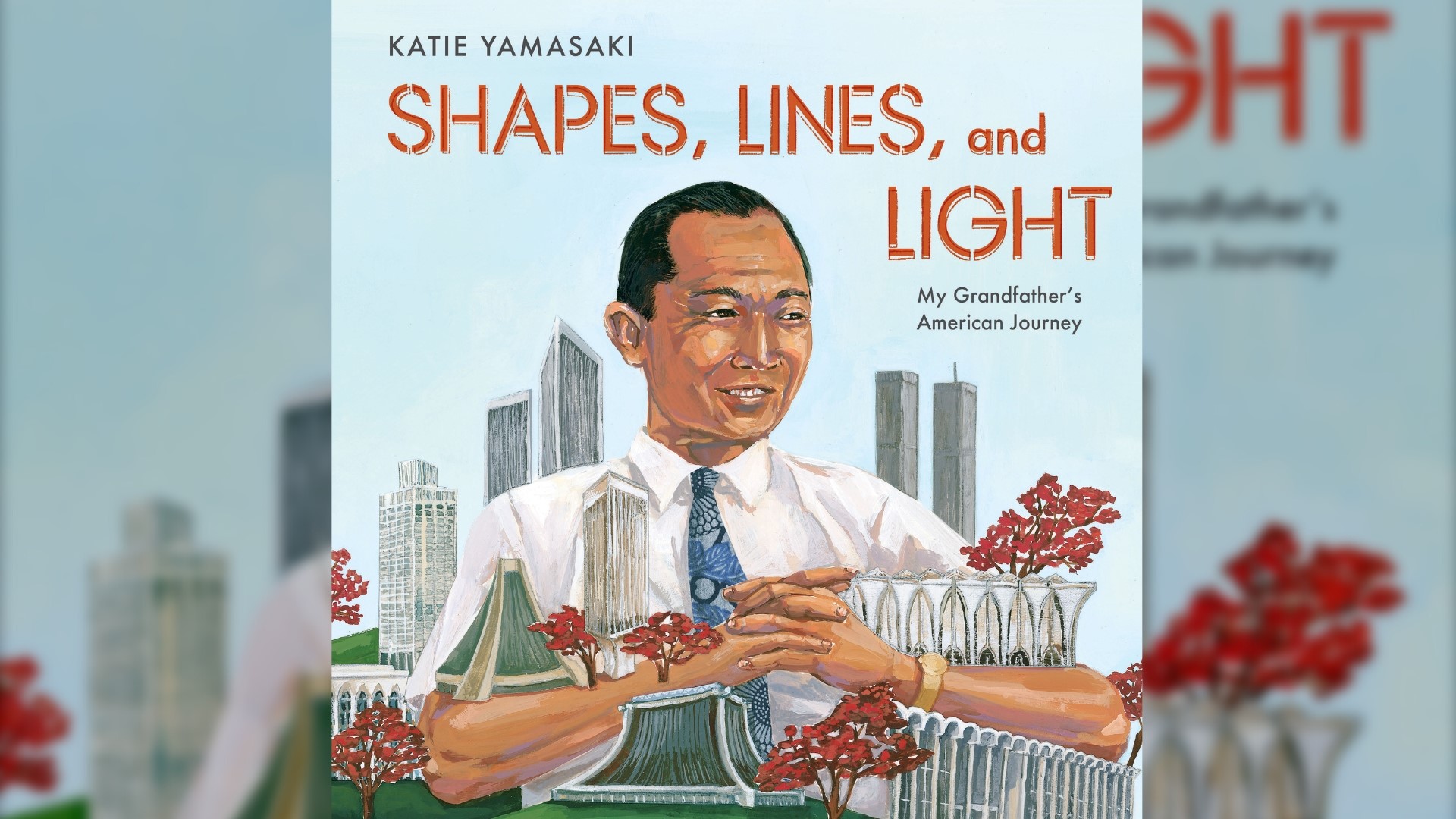SEATTLE — Katie Yamasaki visited Seattle's Pacific Science Center for the first time. What makes this visit special? Her grandfather helped build it.
"It's such a treat, because this building in particular I always saw as some of my favorite work of his, but I've never been able to actually be here," she said, taking in the soaring arches and floating terraces, all built in 1962.
Seattle-born Japanese American architect Minoru Yamasaki designed the Science Center's iconic arches and fountains. He also designed the twin towers of the former World Trade Center in New York.
His granddaughter tells his story in a book she wrote and illustrated: "Shapes, Lines, and Light: My Grandfather's American Journey."
The arches of the Science Center are a key component in the book, used to illustrate her grandfather's life from growing up poor in Seattle's Nihonmachi or Japantown, to becoming the kind of architect who leaves behind a legacy of buildings. Minoru also was the architect for Seattle's Rainier tower, and many other buildings around the world. His designs defied traditional architecture —
just as Minoru defied discrimination.
"To be Japanese American at the time he was alive was not an easy thing. He was born in 1912. He wasn't allowed to swim in public pools, he wasn't allowed to sit in the lower level of the movie theatre," Katie explained . "The buildings he wanted to make were buildings like this, but the ones being made for the Japanese community were internment barracks."
Part of the picture book explains how Minoru Yamasaki lived in New York during WWII and took in extended family to protect them from being imprisoned in internment camps.
Minoru Yamasaki wanted to make buildings that did not intimidate, that did not generate a feeling of not belonging in the space. He looked to nature to make buildings that felt open and welcoming.
"He really wanted to design buildings on a human scale where people could feel relaxed, feel inspired, feel uplifted," Katie said.
She was 10 1in 1986 when her grandfather died, she remembers him well.
“He was a warm and loving grandfather."


She added that she's glad he wasn't alive to see his most famous buildings destroyed when the World Trade Center was destroyed during 9/11. But she's also happy that much of his legacy remains, especially the Pacific Science Center, which is a designated as an historic landmark. There's an extra homage to the space, and Katie and Minoru's relationship, that sharp-eyed readers will recognize underneath the books dust cover.
The main tenets of Minoru Yamasaki's designs are serenity, surprise and delight.
And Katie Yamasaki follows that family tradition with a book that's as beautifully crafted as her grandfather's architecture.
KING 5's Evening celebrates the Northwest. Contact us: Facebook, Twitter, Instagram, Email.

